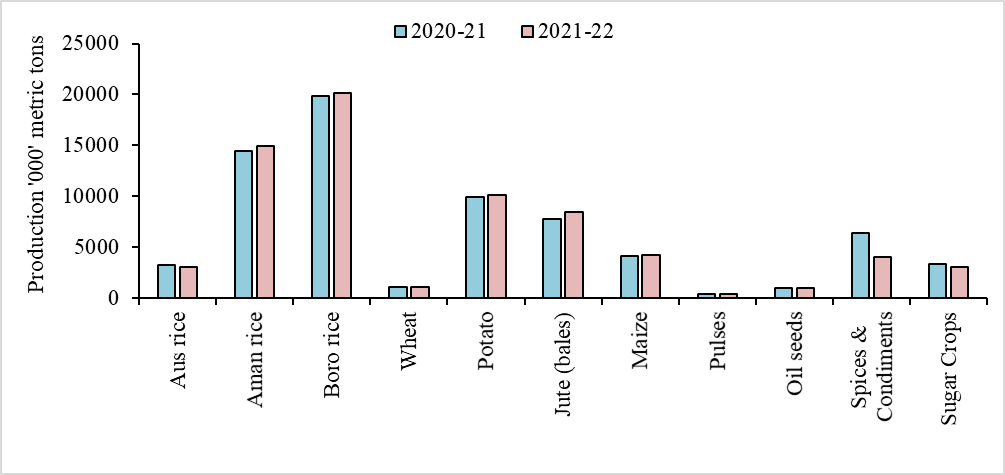Agriculture Policy and Major Areas for Research and Development in Bangladesh
Sushan Chowhan1,2*, Md. Moshiur Rahman3, Razia Sultana4,5, Md. Abdur Rouf6, Majharul Islam7 and Sharmin Ara Jannat8
1Graduate School of Science and Engineering, Saitama University, 255 Shimookubo, Sakura-Ku, Saitama 338-8570, Japan; 2Adaptive Research and Extension Division, Bangladesh Institute of Nuclear Agriculture, Sub-station Ishurdi 6620, Pabna, Bangladesh; 3Plant Breeding Division, Bangladesh Institute of Nuclear Agriculture, Sub-station Satkhira 9400, Bangladesh; 4Department of Agricultural Economics, Bangladesh Agricultural University, Mymensingh 2202, Bangladesh; 5Agricultural Economics Division, Bangladesh Institute of Nuclear Agriculture, Mymensingh 2202, Bangladesh; 6Horticulture Division, Bangladesh Institute of Nuclear Agriculture, Mymensingh 2202, Bangladesh; 7Soil Science Division, Bangladesh Institute of Nuclear Agriculture, Sub-station Satkhira 9400, Bangladesh; 8Soil Science Division, Bangladesh Institute of Nuclear Agriculture, Mymensingh 2202, Bangladesh.
*Correspondence | Sushan Chowhan, Division of Life Science, Graduate School of Science and Engineering, Saitama University, 255 Shimo-Okubo, Sakura-Ku, Saitama 338-8570, Japan; Email:
[email protected]
Figure 1:
Location of NARS institute/organizations in Bangladesh (BARC, 2023).
Figure 2:
Area under different major crops (BBS, 2022).
Figure 3:
Production of different major crops (BBS, 2022).
Figure 4:
Production of different vegetables (BBS, 2022).
Figure 5:
Production of different fruits (BBS, 2022).
Figure 6:
Production of milk, meat, and eggs (BBS, 2022).
Figure 7:
Production of different species of fisheries (BBS, 2022).














